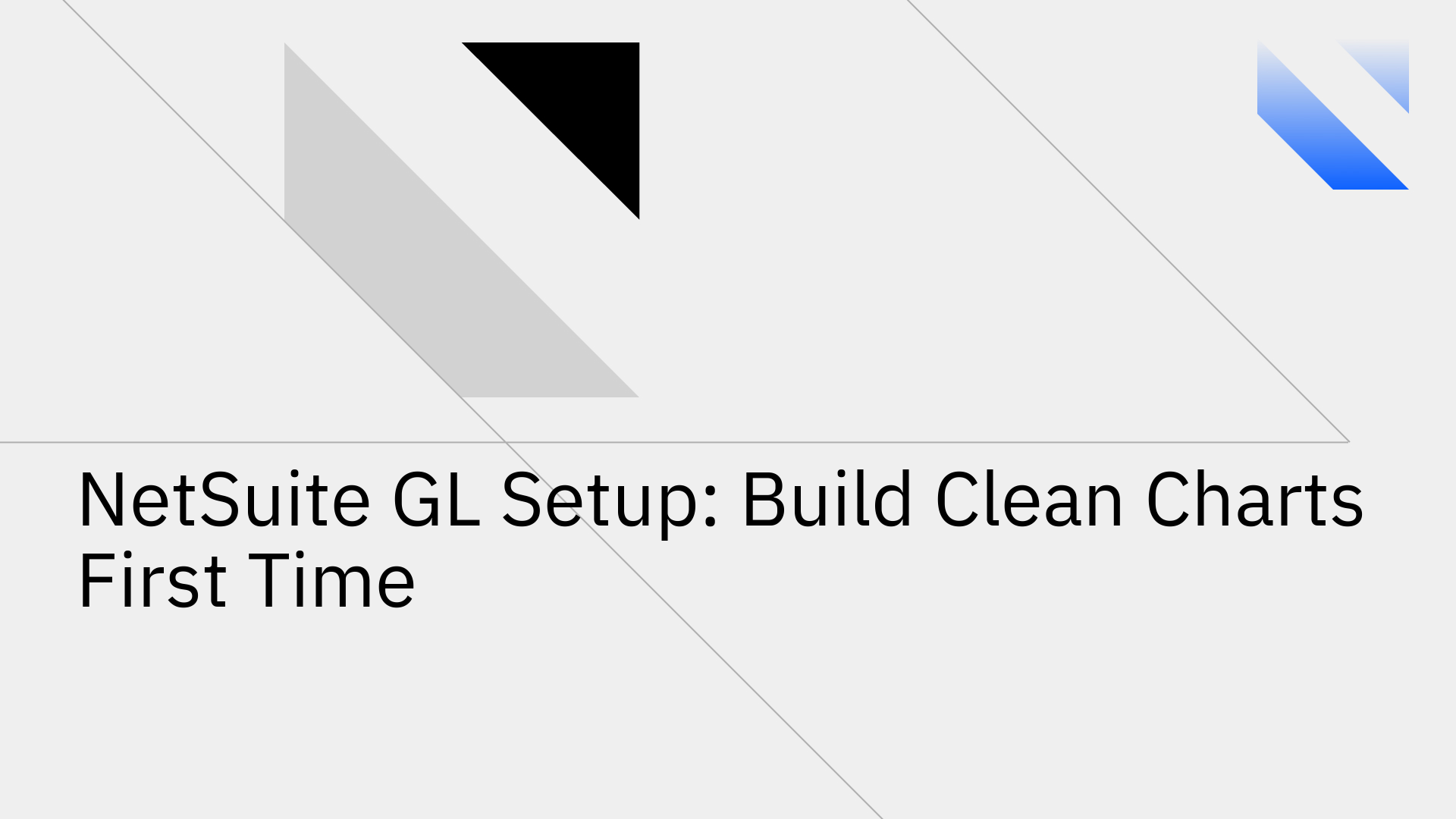
A NetSuite implementation is a critical inflection point for any organization. Yet, many fail to capitalize on it, particularly when structuring the General Ledger (GL). The most common technical failure is migrating a legacy Chart of Accounts (COA) "as-is," which fundamentally undermines the capabilities of the ERP and saddles the business with years of reporting inefficiencies and technical debt.
An implementation is the prime opportunity to dismantle outdated structures and design a financial architecture that leverages NetSuite's dimensional model. Getting the GL and COA right from the outset is not just an accounting exercise; it is the foundation for a scalable, reliable, and efficient financial system.
In NetSuite, the GL is the immutable core of your financial data. Every transaction, from invoices and vendor bills to payroll and inventory adjustments, ultimately posts to the GL. A poorly designed GL creates immediate and compounding problems:
Conversely, a well-architected GL delivers:
Every account in NetSuite must be assigned to one of five non-negotiable categories: Assets, Liabilities, Equity, Income, or Expenses [2]. Within these, accounts are further defined by fixed Account Types (e.g., Bank, Accounts Receivable, Accounts Payable, Cost of Goods Sold) [3].
You cannot create new account types. This rigid structure is a feature, not a limitation. It controls the inherent behavior of accounts within the system—for instance, ensuring Bank accounts appear on cash flow statements and Accounts Receivable links directly to the customer subledger. This framework enforces consistency and simplifies financial reporting.
When building or migrating your COA, focus on creating a lean, logical, and scalable structure.
In legacy ERPs, analytical detail is often embedded directly into segmented account strings. NetSuite decouples the COA from detailed reporting through the use of dimensions, also known as segments. Instead of creating unique GL accounts for every combination, you use a single account and tag transactions with relevant dimensions.
NetSuite's standard dimensions include:
This represents a critical mindset shift: the COA provides the "what" (the account), while dimensions provide the "who," "where," and "why" for powerful, multi-faceted reporting.
A frequent point of confusion is the distinction between Subsidiaries and other classifications (Department, Class, Location).
If an entity files its own taxes, it must be a Subsidiary. All other segmentation should be handled by classifications.
A useful rule of thumb for these two dimensions is:
Define their usage early and enforce it to ensure data consistency.
When standard dimensions are insufficient, NetSuite allows you to create Custom Segments—user-defined dimensions tailored to your business needs. Examples include:
However, a key tradeoff is performance and user friction. Each new mandatory segment adds a field for users to complete. Start with a minimal number of high-value custom segments that drive critical business decisions.
Not all key performance indicators (KPIs) are financial. NetSuite's Statistical Accounts allow you to track non-monetary data, such as headcount, active subscribers, or facility square footage, directly within the ERP [3]. This enables powerful ratio-based reporting, like:
This data often resides in external systems like HR platforms or CRMs. Instead of relying on manual entry, a platform like Stacksync can automate this process. It provides a real-time, bidirectional sync to populate statistical accounts automatically, ensuring your operational KPIs are always current without introducing latency or manual error.
Migrating from a legacy system requires a methodical mapping and validation process.
During migration, maintaining data integrity between NetSuite and other operational systems is crucial. Platforms like Stacksync prevent data drift by establishing a reliable, automated sync from day one. This ensures financial data in NetSuite aligns perfectly with customer data in your CRM or order data in your e-commerce platform, such as in a Shopify NetSuite Integration.
A clean, well-defined GL structure is a powerful tool for audit and compliance. NetSuite's ability to enforce mandatory dimensions and use role-based permissions reduces miscoding risk and demonstrates strong internal controls. This framework is strengthened when integrated systems adhere to the same high standards. Stacksync enhances this by offering a secure, compliant platform for data synchronization, ensuring that data flowing into your GL from other systems is protected by SOC2 and GDPR standards and maintains a full audit trail.
While dimensions are powerful, each one adds complexity to reports and saved searches. For intensive, large-scale analytics, running complex queries directly in NetSuite can impact performance. In these scenarios, many organizations use NetSuite Analytics Warehouse (NSAW).
Alternatively, for real-time operational reporting that combines NetSuite data with other sources, Stacksync offers a purpose-built solution. By enabling real-time NetSuite to database sync, you can replicate NetSuite data to a dedicated analytics warehouse like Snowflake or BigQuery in milliseconds. This offloads heavy query processing while eliminating the latency of traditional ETL batch jobs, empowering your teams with truly up-to-date business intelligence.
Designing the NetSuite GL and COA is a foundational task that dictates the long-term health of your financial system. Getting it right from the start delivers cleaner data, faster reporting, and a scalable architecture that supports growth. Getting it wrong creates technical debt that can take years to untangle. An implementation is your one chance to build it correctly don't waste the opportunity.
A correctly structured GL is the first step. The next is to ensure it remains the single source of truth by integrating it with your entire operational data stack. Discover how Stacksync provides real-time, bidirectional data synchronization to keep your NetSuite GL perfectly aligned with your CRMs, databases, and other mission-critical applications.